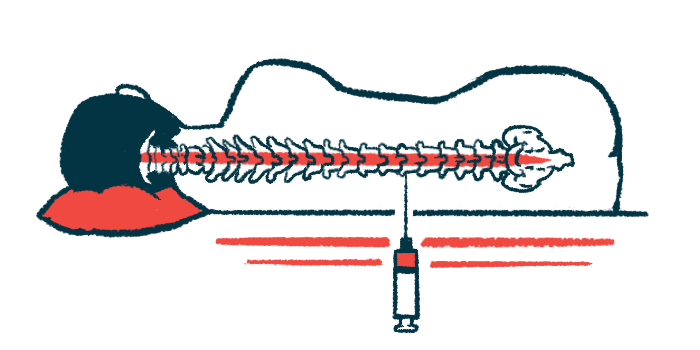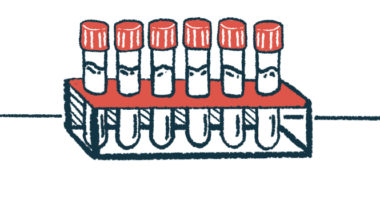Modified scoliosis surgery helps Spinraza treatment in severe cases
SMA patients underwent interlaminar fenestration following spinal fusion

Modified surgery to correct a severe abnormal curvature of the spine in people with spinal muscular atrophy (SMA) allowed for reliable access to the spinal canal for Spinraza (nusinersen) injections, a small study shows.
Spinraza, guided by ultrasound, was successfully administered through a small hole created in the vertebrae in patients with complex spinal fusion implants, which can limit treatment access, according to “Unilateral interlaminar fenestration on the convex side provides a reliable access for intrathecal administration of nusinersen in spinal muscular atrophy: a retrospective study,” which was published in the Orphanet Journal of Rare Diseases.
The progressive weakness and shrinkage of muscles, particularly around the spine, is a hallmark feature of SMA, a rare genetic condition caused by an SMN protein deficiency that leads to the degeneration and death of motor neurons, the specialized nerve cells that control movement.
Weakness in the back muscles that support the spinal column commonly leads to scoliosis, when the spine abnormally bends sideways into an S-shape. Kyphosis, an outward curvature or so-called hunchback, can also occur.
Many patients with scoliosis can wear braces to support the ribs and spine, but others may require surgery to correct the curvature. Standard surgical procedures include spinal fusion, wherein two or more vertebrae are permanently connected, and/or inserting growing rods that stabilize the spine and can be adjusted with growth.
Challenge of severe spinal deformities
Spinraza is widely used to increase SMN protein levels and slow or halt muscle function decline in SMA. It’s administered periodically into the spinal canal, called an intrathecal injection. For some patients with complex spinal deformities — those with two or more fused vertebrae, in particular — standard intrathecal injection is challenging.
“How to achieve intrathecal [Spinraza] administration safely and effectively in SMA patients with severe spinal deformities requiring spinal fusion remains a challenge,” wrote the researchers, who tested the effectiveness and safety of injecting Spinraza via interlaminar fenestration, which involved making a small hole in the lamina, the bony arch that covers the spinal canal. The procedure is typically used to relieve pressure on the spinal nerves and alleviate symptoms associated with herniated discs or spinal cord narrowing, called spinal stenosis.
A total of 13 SMA patients (five male, eight female), ages 11-28, treated with spinal fusion were enrolled. Ten were diagnosed with SMA type 2 and three with type 3. Surgery to correct scoliosis lowered the overall mean Cobb angle (119.2 vs. 56.6 degrees) and the kyphotic angle (119.7 vs. 42.9 degrees). The Cobb and kyphotic angles measure the degree of spinal curvature, with higher values reflecting more severe scoliosis and kyphosis.
Following the surgery, interlaminar fenestration focused on a lumbar vertebra at the base of the spine and on one side (unilateral) of the outward sideways curvature (convex).
In each patient, a small hole was opened in the lamina (0.6-0.8 inches) and covered by a gelatin sponge supported by bone grafts. All wounds healed without complications, as indicated by various blood and infection tests.
Of the 13 patients who had the procedure, nine were successfully treated with Spinraza (four to nine injections) during follow-up, which ranged from three to 22 months after surgery. In total, there were 50 Spinraza administrations. Except for the first patient, all the procedures were guided using ultrasound instead of CT scans.
“The strategy we put forward may avoid unnecessary implants and repeated radiation exposure simultaneously,” the researchers noted.
Leakage of cerebrospinal fluid, the liquid around the spinal cord, was a minor complication in four of the nine Spinraza-treated patients. The most common side effect was a headache followed by nausea and vertigo that resolved after rest.
“This study introduced a novel surgical strategy which suggests additional [unilateral interlaminar fenestration] on the convex side during [spinal fusion surgery] in SMA patients for intrathecal administration postoperatively,” the researchers concluded. “Lumbar puncture via fenestrated interspace under ultrasound guidance permits the safe and effective injection of nusinersen after surgery.”








